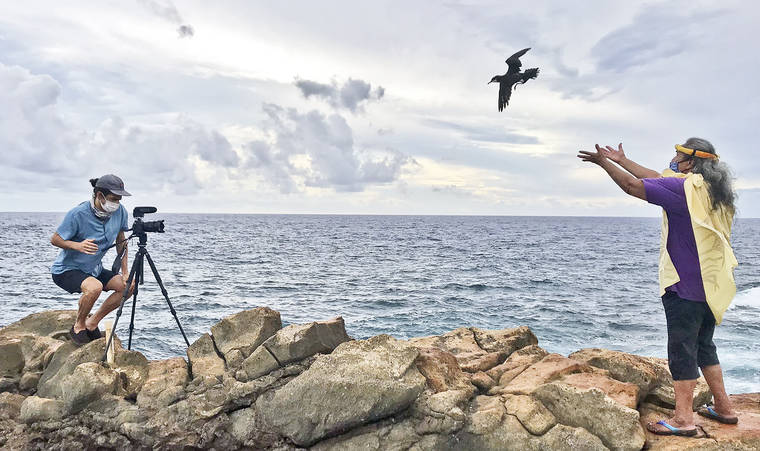LIHU‘E — The COVID-19 pandemic put restrictions on the annual E Ho‘opoomaika‘i ‘ia Manu ‘A‘o, or A Cultural Release of the Native Newell’s Shearwater, when the annual event attended by school children was relegated to the digital virtual platform, states a release from the state’s Department of Land and Natural Resources.
“Because of the global pandemic, we couldn’t have school children attend the release this year, which was a real shame as their enthusiasm and joy at seeing the birds up close is such an integral part of the release,” said Dr. Andre Raine of the Kaua‘i Endangered Seabird Recovery Project. “However, we hope that by sharing the footage of the blessing and the birds being release more people will be able to participate in this special day and learn about the challenging journey these birds take when they leave their mountain burrows for the very first time.”
The KESRP organized the release with the Save Our Shearwaters program where Kumu Sabra Kauka of Island School led the blessing of five ‘A‘o, or Newell’s Shearwater fledglings, that had been grounded by light attraction and rescued by SOS. The rescued birds were successfully released out to the open ocean.
“Releasing an ‘A‘o to the sky and watching it fly out over the ocean with our blessings is always a deep honor,” Kauka said. “The birds have always been an important part of our ‘aina and have helped to shape Kaua‘i over the millennia.”
During the month of October, light attraction becomes a particular concern for ‘A‘o because it is the peak month when young ‘A‘o are leaving their burrows for the first time and heading out to sea. The fledgling ‘A‘o fly from their burrows in the remote mountain areas in which they breed and become attracted to the bright lights of the towns. These attractions cause the young birds to circle until they end up exhausted and become grounded.
If they are not rescued by concerned members of the public, they become easy prey for the cats and dogs on the island or are run over by cars.
For these reasons, the fall-out season runs from mid-September to mid-December, the main highlight being to keep unnecessary lights turned off, including the prohibition of nighttime sporting events where lights in the county’s and state’s parks are not permitted.
Each year, the SOS project rehabilitates both ‘A‘o and U‘au, or Hawaiian Petrals, that are either injured by powerline collisions, or attracted to artificial lights on the island.
“At this time of the year, everyone can help — both, making sure that unnecessary lights are turned out, and by keeping an eye out for fallen birds,” said the SOS Program Coordinator Molly Bache. “If birds are found, they should be carefully collected and placed in one of the aid stations located at the Kaua‘i County fire stations, and other locations around the island where they can be collected by the SOS project staff.”
KESRP studies done between 1993 and 2013 have shown that both species have suffered severe declines on Kaua‘i, the island’s population of ‘A‘o declining by 94%, and the U‘au by 78%.
KESRP is a joint project between the DLNR Division of Forestry and Wildlife project and the Pacific Cooperative Studies Unit of the University of Hawai‘i. SOS is a DLNR project housed at the Kaua‘i Humane Society and financially supported by the Kaua‘i Island Utility Cooperative.





